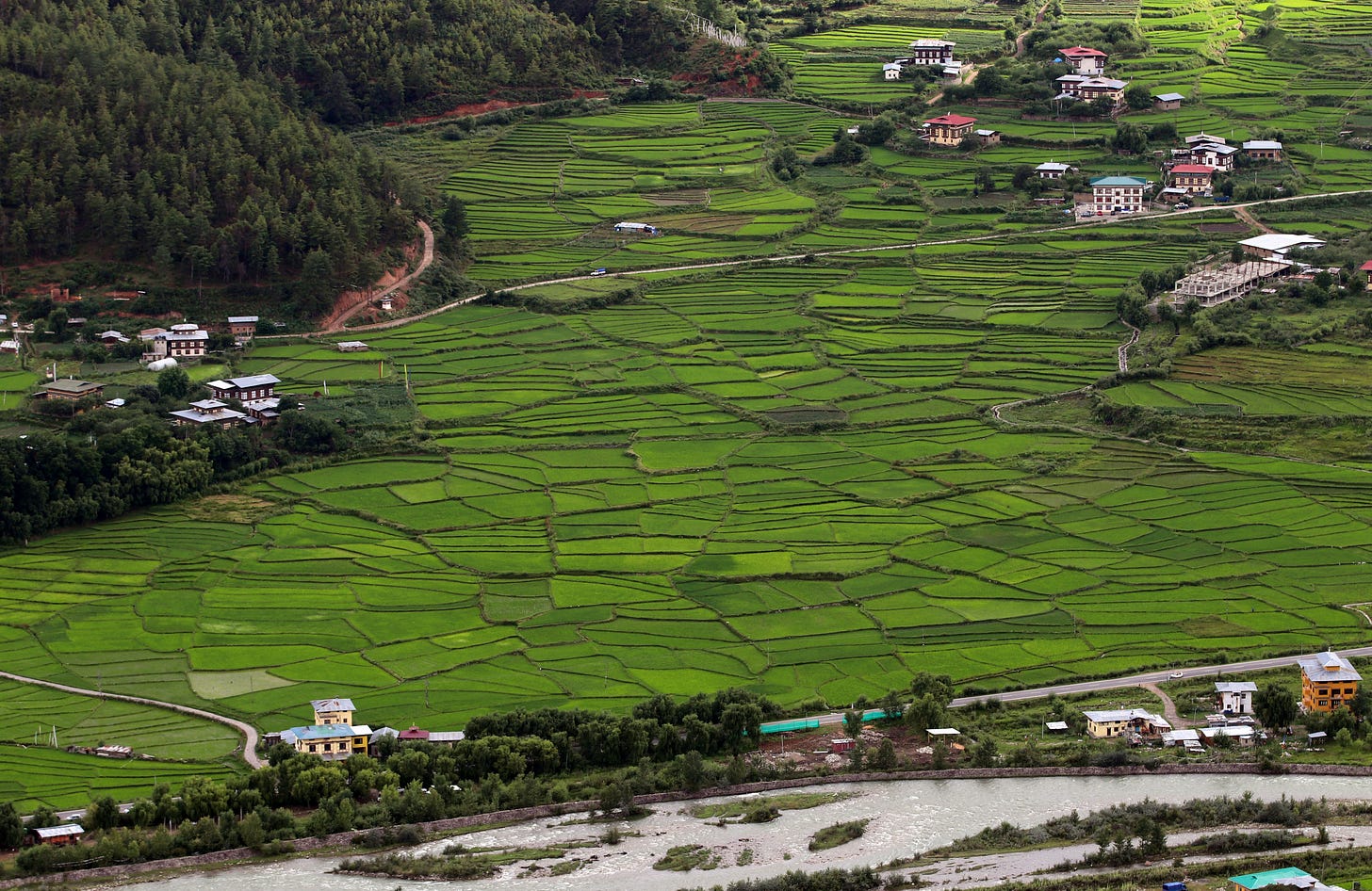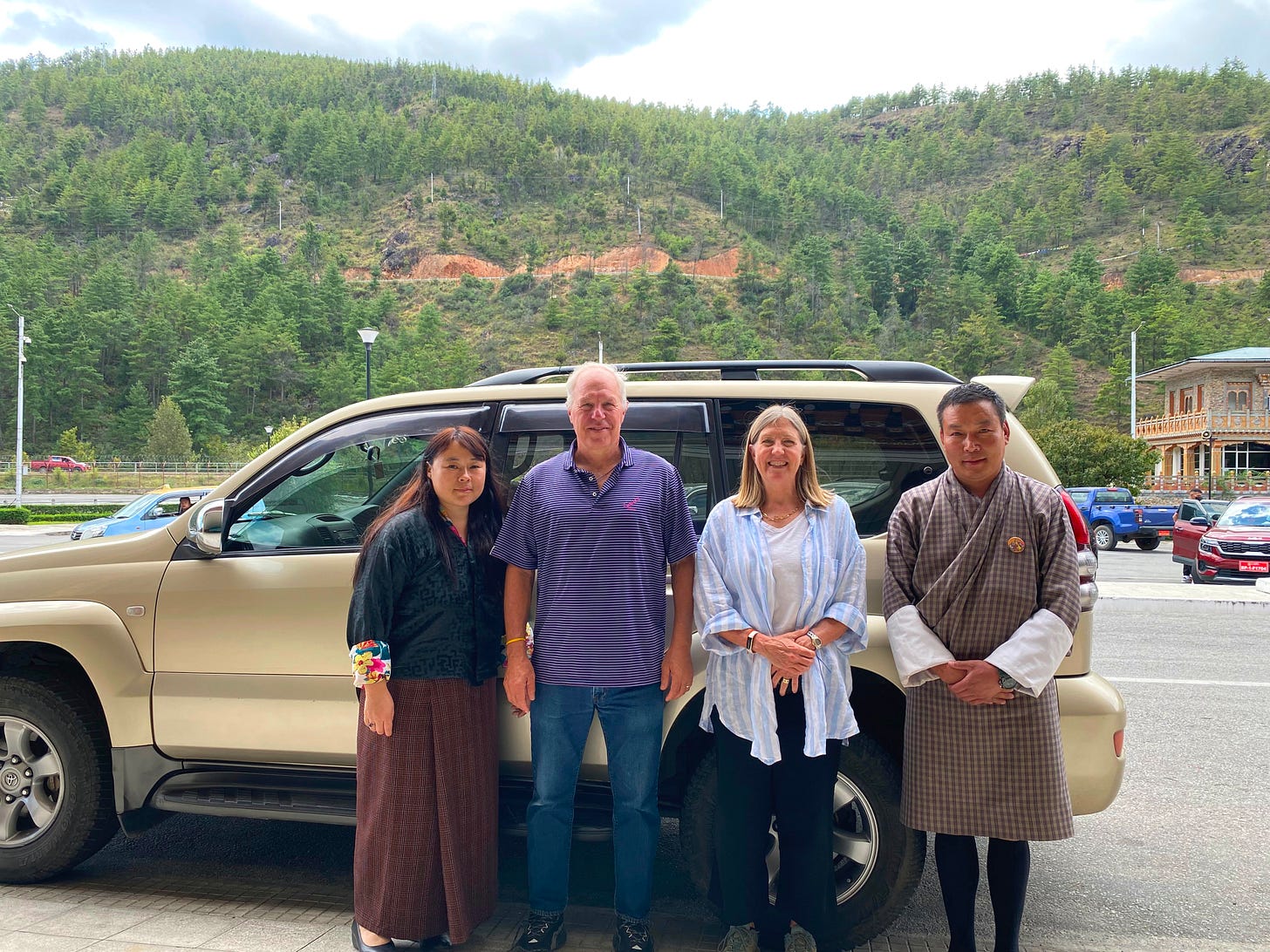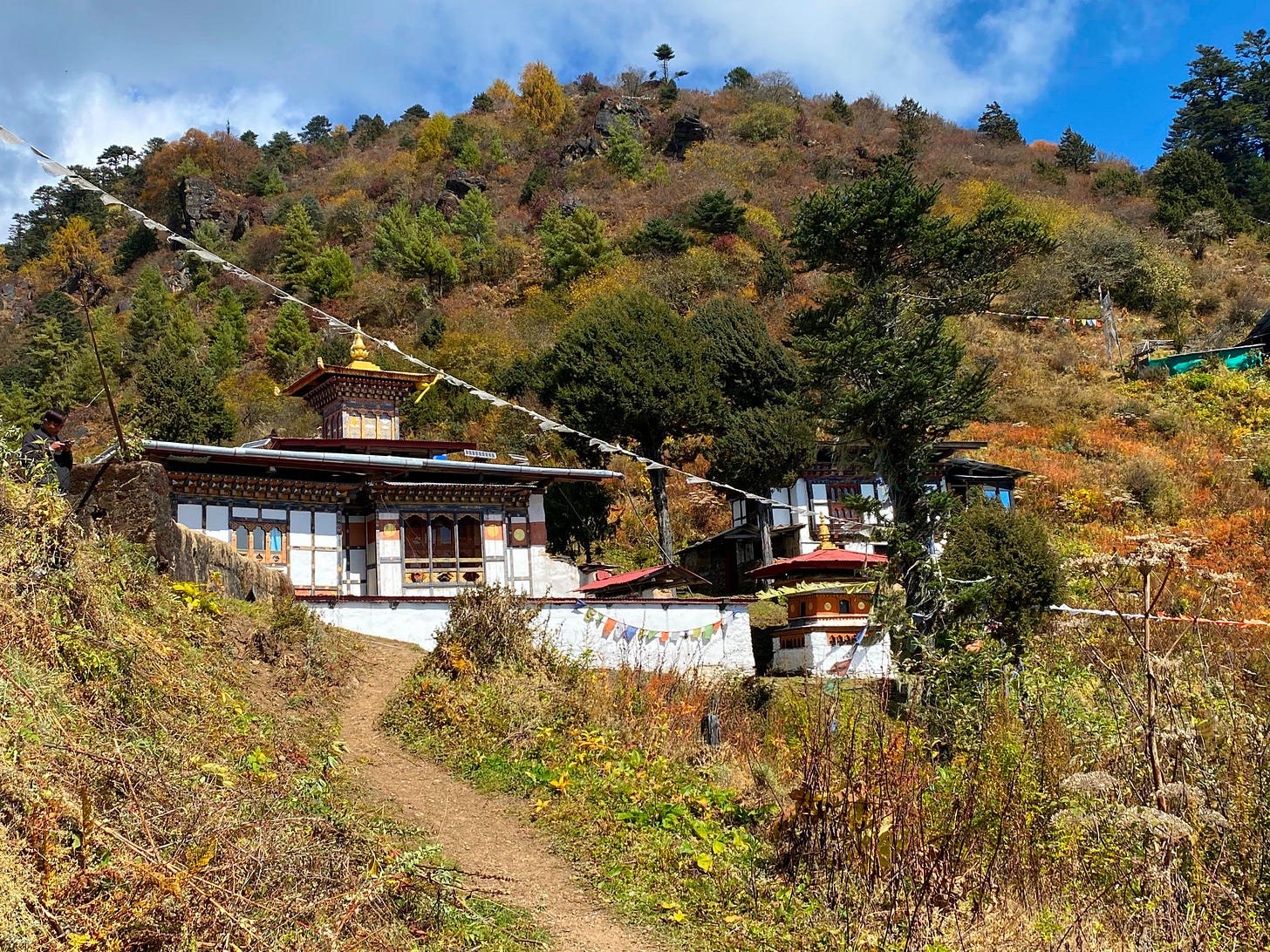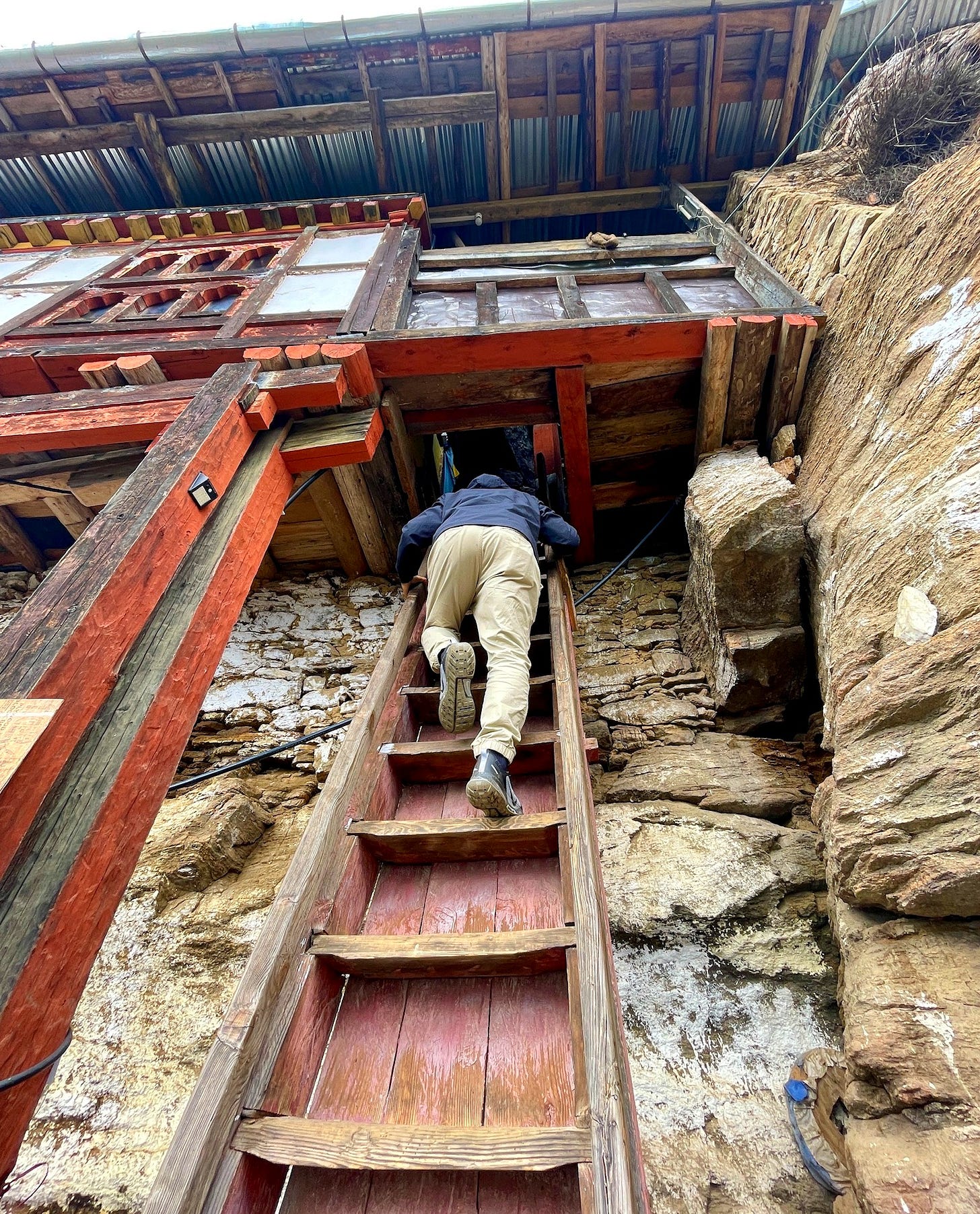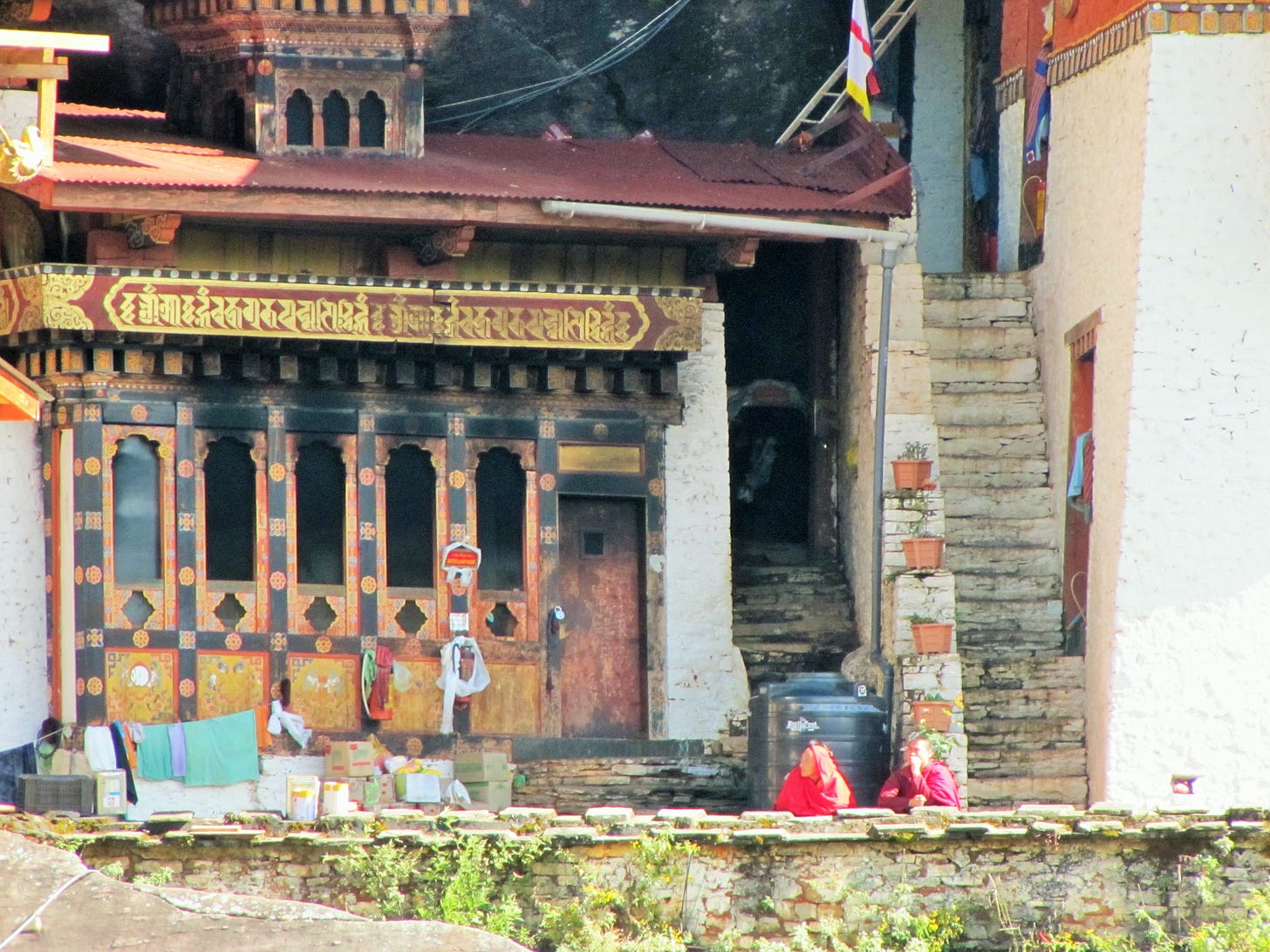Hiking Bhutan: A More Secluded Trek to Tiger’s Nest
The Path Less Traveled is Truly Sublime
The crown jewel of our Bhutan trip was a two-day, 12-mile trek to Tiger’s Nest with an overnight stay at Bumdra Camp. While most visitors hike with crowds directly up to crag-hugging Tiger’s Nest in a few hours, we suggest a more secluded route that takes you through different eco zones to a remote, high altitude overnight stay at 12,500 feet before crossing the mountainside and descending to the revered monastery at 10,500 feet. It offers a nature-oriented approach to the popular site and rewards through physical challenge, mindfulness, and engagement with Bhutan’s alpine culture.
An Amazing Set-up and Setting for Our Trek
After a full week in Bhutan, we had begun to meld into the place, which made us feel more grounded and contemplative. The calm was dramatic and welcome. People spoke softly, moved with care, and left room for silence.
Bhutan, the remote Himalayan kingdom known as the Land of the Thunder Dragon, remained largely closed to outsiders for much of its history. Even now, it guards its traditions closely. Architecture and daily attire are required to follow Bhutanese customs, and Buddhist culture continues to shape daily life. With immense mountains and forested valleys, most people live in rural areas, farming or raising livestock. Colorfully framed wooden homes and towering dzong temples, built without nails, reflect a deep respect for heritage and craftsmanship.
We traveled across Bhutan in late October by road in a comfortable 4x4 SUV with our driver Sangay and our guide, also named Sangay. Conversation was usually centered on culture or history, and it felt intentional and measured, which suited us. We spent long days together and came to appreciate our relationship with them, not just for their professional acumen, but also for their wisdom and unassuming sense of humor. We also enjoyed learning about their families and the paths they had taken that brought us all together.
In the days leading up to the trek, we roadtripped from the capital of Thimphu to the green valleys of Punakha and on to outdoorsy Paro. We hiked to hilltop monasteries, crossed high mountain passes, and went whitewater rafting. Not only were our activities amazing, but they all helped us acclimatize to the altitude so that we were ready for our trek to Bumdra.
The Ascent
Starting from a trailhead perched above Paro, we followed Sangay into the forest with daypacks full of warmer layers that we would employ as we climbed. Within minutes, we were on a loamy dirt path amid a pine forest with prayer flags fluttering intermittently along the way.
This lower section runs through conifer forest of Bhutan white pine and blue pine, punctuated by the occasional tree rhododendron. After about an hour, we stopped at a hillside temple for lunch. We enjoyed a simple spread of vegetables, rice, dumplings, hard-boiled eggs, hot tea, and a juice box. Strings of prayer flags flapped between the trees around us as we took in the views.
As we climbed higher, the forest occasionally opened to views of the Himalayas stretching across an immense valley, a reminder of how far up we had already hiked. Blue wildflowers brightened the path, and moss hung draped from the tree branches like long, silky necklaces. At this altitude, the white pine needles turned golden with the season, much like the cherished larches in the mountains back home.
Bumdra Camp
After three to four hours of steady climbing, a meadow came into view. Bumdra Camp sat in a high, wide clearing below a wooded ridge, tents pitched in an arc with views over the valley. A small monastery clung to the slope above. Yaks grazed nearby, including one young calf with streamers decorating its back.
Before settling in, Sangay invited us to join her in walking clockwise around the camp’s central stupa, something we had done with her many times on the trip. The tents were tucked into the slope and faced the view. Inside, a low bed with thick blankets and a patterned carpet gave it a glamping vibe. After dropping our daypacks and adding a layer of clothing, we were welcomed with hot cocoa, tea, and popcorn at a table outside, made cozier with a locally crafted tablecloth. Gregarious dogs and cats, local pets at the camp, nudged us for attention. We shared the camp with only four other visitors.
That afternoon, we visited Bumdra Monastery, known as the “Rock of One Hundred Thousand Footprints.” Inside the temple, vertical ladders connected the different floors instead of steps. Prayer wheels lined the window sills, framing magnificent views of the camp and the mountains beyond.
Dinner back at the camp’s mess tent was simple, with an emphasis on serving everything hot including piping hot tea to offset the dropping temperatures. Conversation that night centered on the news that the King of Bhutan and members of the Dutch royal family would soon be arriving to the camp, with details of the preparation being done to host them. After that night, all hiker reservations had been cleared for several days. We had gotten lucky with our timing.
Tiger’s Nest
After breakfast the next morning we began the pleasant descent. The trail wound down through shifting forest, quiet and shaded, until we reached a high overlook with a view of the valley below us. And there it was, Tiger’s Nest.
Perched on a sheer granite cliff, Paro Taktsang, or Tiger’s Nest Monastery, was built in1692 around a cave where Guru Padmasambhava is said to have meditated in the 8th century. Legend holds that he flew here on the back of a tigress to subdue a demon and bring Buddhism to Bhutan. The story sounds far-fetched until you see the place, balanced improbably on the cliffside, its white walls and golden roofs glinting in the sun.
We descended steep switchbacks to a small stone bridge and a lofty, ribbon-like waterfall, then climbed again to the monastery gates. Along this stretch, we encountered crowds funneled toward the entrance, a noticeable contrast to our prior 24 hours of near solitude. Bhutan is the least touristy country that we have traveled to, but here at its most iconic spot, other visitors were unavoidable. We queued up to check our bags and phones at the entrance.
Inside, butter lamps flickered in alcoves, a sense of awe prevailed. Every wall, pillar, and ceiling seemed to be painted or carved. We moved through slowly in stocking feet circling clockwise in each room, taking in the animated stories told through murals. Sangay tested us on naming each of the different buddhas after our weeklong tutorial. We got several correct on our own and Sangay tactfully helped us remember the others.
We completed the trek with a two-hour descent amid a steady flow of hikers. At the trail's end we were tired in a good way, ready for a shower and a hearty dinner. The overnight route made Tiger’s Nest feel special, and the full arc of the experience, including the climb, the camp, and the descent, was worth every step. It is without a doubt, a uniquely memorable and our recommended way to see it.
Notes for the Active Traveler
Trek Distances & Altitude
The total hiking time is 8-10 hours and 11.8 miles over two days with an overnight at Bumdra Camp. It is high altitude so know your thresholds. Reduced oxygen makes breathing harder, water intake becomes more important. Pace can be adjusted to combat fatigue. We suggest scheduling this toward the end of your trip and to get some day hikes in beforehand to acclimate, which is what we did.
Sangchoekor Monastery to Bumdra Camp Distance: 4.3 miles
Ascent: 9,200 ft to 12,500 ft
Time: 3–4 hours
Bumdra Camp to Tiger’s Nest Distance: 5.6 miles
Descent: 12,500 ft to 10,200 ft
Time: 3–4 hours
Tiger’s Nest to Trailhead Distance: 1.9 miles
Descent: 10,200 ft to 8,500 ft
Time: 2 hours
Bhutan Entry and Guide Service Requirements
Traveling to Bhutan comes with some additional costs, which we felt were well worth it to experience and support Bhutan’s amazing cultural preservation.
*Things change – double check everything below for current regulations.
Guide Service
In Bhutan, travelers are required to travel with a licensed guide as part of a pre-arranged and government-approved itinerary. Independent travel is not permitted in the way it is in many other countries.
We heartily endorse Ventours International Travels, the folks who took care of us and all of our logistics, and their local partner Tashi Tours. The service and experiences were stellar. They can set you up with the overnight trek to Tiger’s Nest via Bumdra Camp as well as a whole host of other travel experiences in Bhutan.
Bhutan Entry Requirements
Travelers must obtain a visa in advance, costing $40, and pay a Sustainable Development Fee of $100 per person per night, which supports Bhutan’s environmental and cultural preservation efforts.
Children aged 6 to 12 pay a reduced fee of $50 per night, while those under 6 are exempt.
Indian nationals pay a lower SDF of approximately $15 per night and require a permit instead of a visa.
Indian, Bangladeshi, and Maldivian citizens can enter Bhutan with fewer restrictions.






